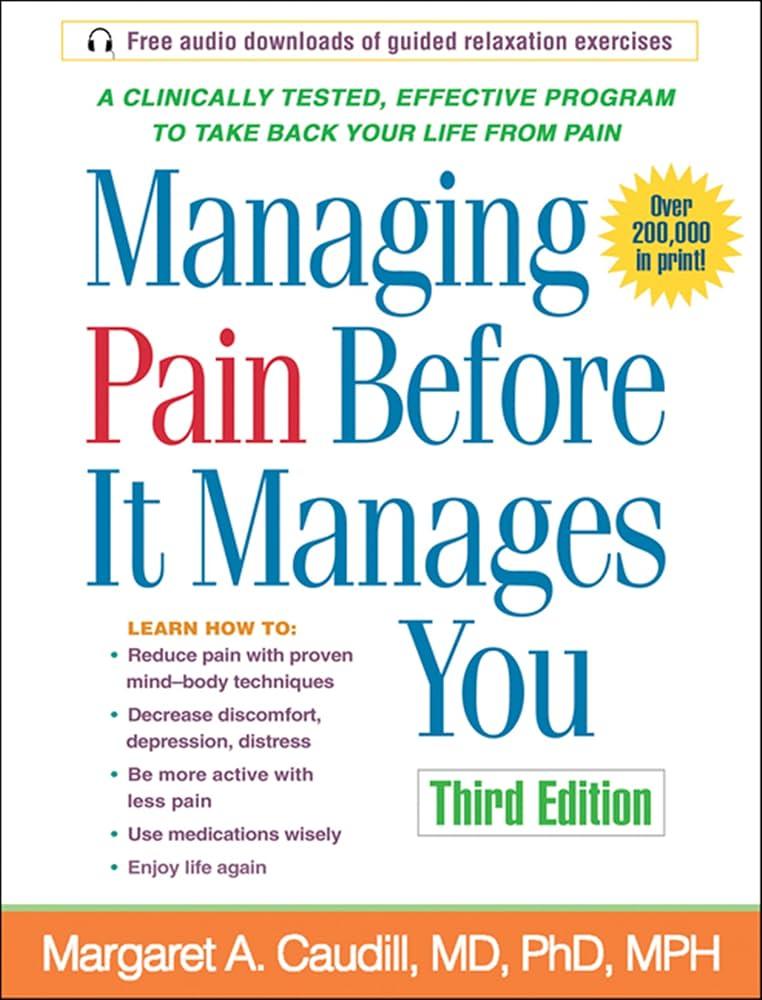Imagine transforming your skin with just a few quick, non-invasive treatments, erasing years of sun damage, age spots, and even those pesky fine lines. Sounds like a dream come true, right? Welcome to the world of Intense Pulsed Light, commonly known as IPL. This magical wand of the beauty world promises radiant, youthful skin with minimal downtime. But before you jump on board, it’s important to know that, like every enchanted spell, it comes with its own set of side effects. In this friendly guide, we’ll illuminate the potential pitfalls behind the glow, ensuring you step into your IPL journey with eyes wide open. So, grab a cup of tea, sit back, and let’s dive into the hidden facets of this popular beauty treatment together!
Table of Contents
- Understanding IPL: A Glimpse into the Technology
- Immediate Reactions: What to Expect Right After Treatment
- Long-term Implications: Is Your Skin Safe in the Future?
- Managing Discomfort: Tips to Soothe and Heal Effectively
- Consulting Experts: When and Why to Seek Professional Advice
- Q&A
- To Wrap It Up

Understanding IPL: A Glimpse into the Technology
At its core, Intense Pulsed Light (IPL) technology uses high-powered, hand-held flashguns to deliver a broad spectrum of light in quick pulses. These pulses penetrate the skin to target melanin and hemoglobin beneath the surface, making IPL an effective treatment for various skin conditions and unwanted hair. The technology harnesses visible light, typically in the range of **500 to 1200 nanometers**, and modulates it to focus on specific pigments while sparing surrounding tissues.
Unlike lasers, which emit a single wavelength of light, IPL offers a **poly-chromatic** solution, allowing it to address multiple skin issues. Moreover, modern IPL devices come equipped with customizable settings, enabling practitioners to tailor treatments to individual skin types and concerns. Below are some common uses of IPL technology:
- Hair Removal: Targeting hair follicles for long-term reduction.
- Skin Rejuvenation: Enhancing overall skin texture and tone.
- Acne Management: Reducing acne-causing bacteria.
- Vascular Lesions: Treating spider veins and broken capillaries.
The science behind IPL lies in its capacity to induce controlled damage, which stimulates the skin’s natural healing processes. When directed at hair follicles, the light is absorbed by melanin, heating and destroying the follicle. In the case of pigmentation issues, IPL can diffuse spots, evening out the complexion. Here’s a glimpse into its mechanism:
| Issue | Target | Effect |
|---|---|---|
| Unwanted Hair | Melanin in Hair Follicles | Hair Reduction |
| Dark Spots | Melanin | Spot Lightening |
| Acne | Bacteria | Reduction in Outbreaks |
While IPL technology is a marvel in the cosmetic industry, it’s not free of side effects. Post-treatment reactions may include **redness, swelling, and minor discomfort**, similar to a mild sunburn. For those with darker skin tones, there’s a risk of pigmentary changes, either hyperpigmentation or hypopigmentation. It’s crucial to consult with a certified professional to conduct a skin test before diving into full treatments. By understanding how IPL works and its possible side effects, you can make informed decisions and enjoy the benefits with peace of mind.

Immediate Reactions: What to Expect Right After Treatment
Once the IPL treatment session wraps up, it’s quite normal to experience certain immediate reactions. You might notice a slight redness or mild swelling in the treated areas, almost like a faint sunburn. Don’t worry; this usually subsides within a few hours to a day. Applying a cool compress or soothing aloe gel can help ease these sensations.
Other immediate reactions you may feel include:
- Mild discomfort – Similar to the feeling after a pinch.
- Warmth – The skin might feel heated, akin to a post-workout flush.
- Sensitivity – The treated area could be more sensitive than usual.
While these reactions may sound daunting, they’re completely typical and vary from person to person. Your skin might also darken slightly, forming what looks like tiny coffee grounds that gradually shed in a few days. This process is known as “getting crusty,” and it’s a positive sign indicating effectiveness.
| Immediate Reaction | Duration | Care Tips |
|---|---|---|
| Redness | Few hours to 1 day | Use a cool compress |
| Swelling | Few hours to 1 day | Apply aloe gel |
| Darkened spots | 2-3 days | Let them shed naturally |
Remember, these side effects are just fleeting visitors on your journey to radiant skin. Embrace them as part of the process, and soon enough, you’ll witness the glow of renewed confidence! Drinking lots of water and avoiding direct sun exposure for a few days post-treatment can also aid in your skin’s swift recovery.
Long-term Implications: Is Your Skin Safe in the Future?
As you consider integrating IPL treatments into your beauty routine, it’s essential to ponder the long-term effects on your skin. One of the primary concerns is the **potential for skin aging**. While IPL, or Intense Pulsed Light therapy, can be effective in tackling pigmentation and hair removal, the repeated exposure to light energy can have a cumulative impact on skin health over time. The breakdown of collagen and elastin, pivotal proteins for skin’s firmness and elasticity, is a potential risk that could accelerate skin aging if not managed correctly.
The issue of **chronic sensitivity** also looms large with long-term IPL use. With the skin being exposed to light pulses continuously, it might become more susceptible to external factors like UV rays and pollutants. This heightened sensitivity can manifest as an increase in redness, a decrease in skin tolerance for certain skincare products, and an overall heightened vulnerability to irritation and sun damage. To mitigate this, aftercare and strict adherence to sun protection become indispensable.
Moreover, the **risk of pigmentation issues** may be a concern, particularly for individuals with darker skin tones. The energy from IPL can sometimes cause hyperpigmentation or hypopigmentation due to excess melanin production or a reduction in melanin respectively. If these side effects are not monitored and treated promptly, they could result in uneven skin tone that might require corrective treatments in the future.
Lastly, the **financial and time investment** necessary for maintenance sessions can add up over the years. While the initial allure of smooth, hair-free skin is compelling, it’s worth considering the long-term commitment. Regular treatments might be required to maintain results, and this repeated process over years can become quite an investment. Here’s a brief comparison to illustrate this point:
| Factor | Short-Term | Long-Term |
|---|---|---|
| Cost | Moderate | High |
| Time Commitment | Minimal | Significant |
| Skin Health | Improved | Variable |
It’s crucial to weigh these factors thoughtfully, ensuring your decisions today don’t compromise your skin’s health in the future.

Managing Discomfort: Tips to Soothe and Heal Effectively
Experiencing discomfort after an IPL treatment is not uncommon. The good news is that there are a variety of methods you can try to alleviate those pesky symptoms and promote quicker healing. A great start is to **keep the treated area cool**. Applying a cold compress can significantly reduce any swelling and soothe irritation. Be sure to wrap ice packs in a soft towel to avoid direct contact with the skin, which can cause further damage.
Moisturizing plays a critical role in your recovery process. **Hydrate the skin with a gentle moisturizer** that contains natural ingredients like aloe vera or chamomile. These help to calm the skin and speed up the healing process. Avoid products with harsh chemicals or fragrances as these can aggravate the skin even more. Some people find that switching to fragrance-free skincare products for a few weeks post-treatment works wonders.
| Product | Benefit |
|---|---|
| Aloe Vera Gel | Soothes and cools the skin |
| Chamomile Lotion | Reduces redness and irritation |
It’s also essential to **give your skin some breathing room**—literally. Wearing loose, breathable clothing can prevent further irritation on the treated areas. Tight fabrics may rub against the skin, causing additional discomfort. Opt for soft materials like cotton and avoid synthetic blends that can trap heat and moisture.
don’t underestimate the power of **proper sun protection**. The treated skin areas are more susceptible to UV damage, so applying a broad-spectrum sunscreen with at least SPF 30 is crucial whenever stepping outdoors. Make sunscreen a staple in your skincare routine and consider wearing hats or other protective clothing to minimize exposure.

Consulting Experts: When and Why to Seek Professional Advice
While the allure of smooth, hair-free skin makes IPL (Intense Pulsed Light) treatments highly attractive, it’s essential to recognize when professional guidance is indispensable. Many individuals embark on the IPL journey with scant knowledge of skin types or potential reactions, which can lead to unexpected side effects. To safeguard your skin, a consultation with a licensed dermatologist or skin care specialist is vital. These experts can assess your suitability for IPL and tailor the treatments to your unique needs.
Consider reaching out to a professional in these scenarios:
- Skin Sensitivity: If you have a history of sensitive skin or allergies, an expert can provide a thorough assessment.
- Previous Skin Conditions: Those who have experienced conditions like eczema, psoriasis, or acne should seek advice to avoid aggravating their skin.
- Dark or Tanned Skin: IPL can interact differently with darker skin tones. Professional guidance ensures safe and effective treatments.
Here’s a quick comparison of DIY IPL versus Professional Consultation:
| Aspect | DIY IPL | Professional Consultation |
|---|---|---|
| Skin Assessment | Basic | Comprehensive |
| Safety | Moderate | High |
| Customization | Limited | High |
Seeking the guidance of a professional doesn’t signify a lack of confidence in your self-care abilities. On the contrary, it illustrates a commitment to the health and well-being of your skin. Experts bring a wealth of knowledge and experience to the table, helping you enjoy the benefits of IPL treatments while minimizing risks. Prioritizing professional advice can turn your IPL experience from a mere experiment to a safe, effective journey towards radiant skin.
Q&A
Q&A: Unveiling IPL: Side Effects You Need to Know
Q: What exactly is IPL, and why is everyone talking about it?
A: Ah, IPL! It stands for Intense Pulsed Light. Think of it as a multi-talented laser that helps with hair removal, skin rejuvenation, and even tackling pesky issues like age spots and vascular lesions. It’s the talk of the town because who doesn’t want flawless skin or a bit of an aesthetic glow-up?
Q: Sounds magical! But are there any side effects I should be aware of?
A: Like a genie granting wishes, IPL can deliver fantastic results, but it’s not without a few hiccups here and there. Common side effects are usually minor and temporary. Think mild redness, a slight stinging sensation, or a little swelling. It’s like your skin’s way of saying, “I’m working on it!”
Q: That doesn’t sound too bad. But are there more serious side effects I might face?
A: Going beyond the occasional ‘tingle and blush,’ some people may experience blistering, scabbing, or changes in skin pigmentation. Rarely, there’s a possibility of burns. These are like the plot twists in a movie—generally unexpected, but possible. Always have a chat with your practitioner to understand the risks involved.
Q: Who should steer clear of IPL treatments?
A: IPL isn’t a one-size-fits-all solution. It’s best avoided if you’re pregnant, on certain medications, or if you have darker skin tones, as it might cause pigmentation issues. Additionally, those with severe skin conditions like eczema or psoriasis should proceed with caution. Think of it like choosing the right wand in Harry Potter – the treatment must suit the individual.
Q: How can I minimize side effects and enjoy my IPL experience?
A: Great question! Here’s the magic potion: Always visit a certified and experienced practitioner. Follow pre- and post-care instructions meticulously—think of them as your skincare commandments. Hydrate, use sun protection, and avoid harsh chemicals or exfoliants for a bit. Your skin is like a canvas; treat it with the utmost care.
Q: What’s the bottom line? Worth the try or should I give it a pass?
A: If your skin and circumstances align, IPL can be a game-changer. It’s about assessing the pros and cons, much like choosing toppings for your pizza. Do a patch test, have a detailed consultation, and listen to your instincts. Many have found their ‘happily ever after’ with IPL, and perhaps, so can you!
Questions unanswered? Concerns lingering? Drop them in the comments, and let’s illuminate the IPL mystery together!
To Wrap It Up
As we draw the curtain on our deep dive into the radiant realm of IPL, it’s clear that while the promise of flawless skin can be incredibly enticing, it’s equally important to shine a spotlight on the potential side effects lurking in the shadows. Every beam of light has its charm but also its caveats. Armed with the knowledge from this article, you’re now better equipped to navigate the world of Intense Pulsed Light treatments with both excitement and caution.
Remember, radiant readers, that every skin journey is uniquely personal. Whether you’re considering IPL for its rejuvenating wonders or exploring alternative pathways, the key is to stay informed and consult with a trusted dermatologist.
Let your decisions be as bright and beautiful as the skin you’re aiming for. Here’s to glowing with wisdom and to the radiant adventures that lie ahead. Stay luminous and always curious!






